One of the big questions surrounding film developing is what to do with the chemicals after they are used. Disposing of them in the right way is one of the best steps you can take when trying to reduce the environmental impact of your film photography.
Film developing chemicals contain toxic-sounding names like hydroquinone, phenidone, or p-aminophenol. These are usually derived from the petrochemical industry, and, at full strength, are harmful to aquatic ecosystems. Some of the used chemicals also contain silver that they’ve stripped from the negatives.
Some film developers can be safely poured down the sink, while others will need to be disposed of properly. Film fixer contains silver, which is toxic to aquatic ecosystems and needs to be disposed of properly through your local lab, or dried in cat litter and disposed of with the solid waste.
Disposing of film developing chemicals properly is not always easy. Every town or city will have different standards and different methods of disposing harmful chemicals.
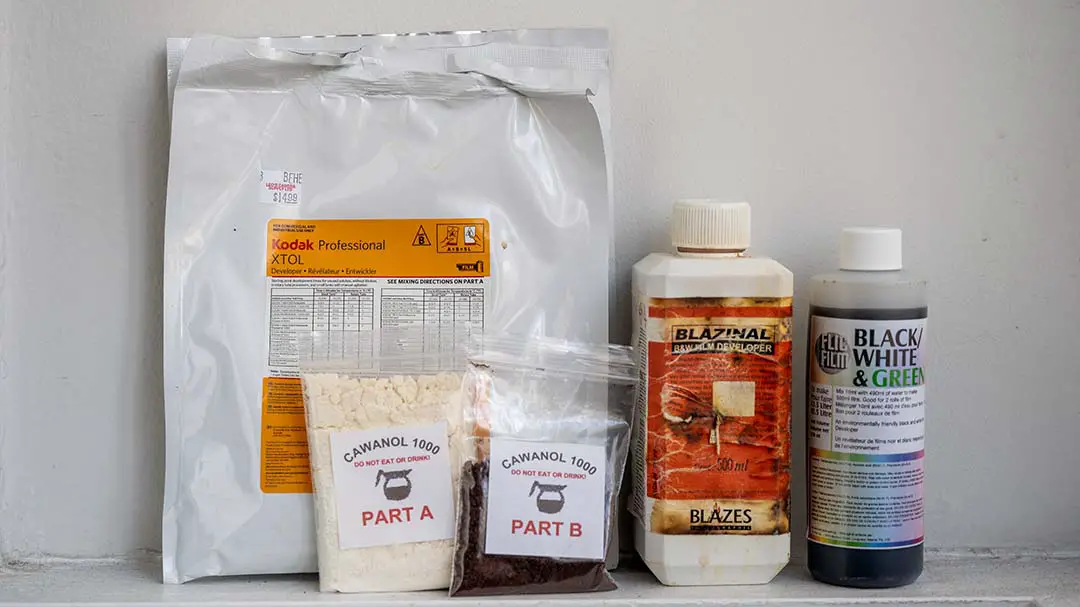
Which film developers are safe to dispose of down the drain?
There are a few classes of film-developing chemicals that are safe to put down the drain or in a septic system.
Caffenol (or other garden variety film developers, like basil-based developers) have almost no environmental impact and can be dumped down the drain without worry. Caffenol developers are made using instant coffee (or any number of vegetables), Vitamin C, and washing soda.
Coffee contains a phenol called caffeic acid, which at a high pH (around 8 or 9) will develop film.
The second class of film developers that are safe comes from commercial suppliers. These are phenidone-Vitamin C developers, like XTol, Black, White, and Green, and Eco Pro LegacyPro Ascorbic Acid developer.
Phenidone is a phenol that is derived from the oil and gas industry. But it is 10x more active than other phenols when mixed with a superadditive like Vitamin C, making it the most efficient film developer on the market. The amount of phenidone needed to develop two rolls of 35mm film is so small it can’t be measured out using a standard scale at home.
However, phenidone being 10x more active than hydroquinone or metol developers also means it can cause 10x as much damage to the environment. In most cases, phenidone will break down very quickly, and like all other phenols, it will not bioaccumulate.
So long as you’re not developing industrial levels of film, it will not likely be distinguishable from background levels in the environment. However, if you’re using a septic tank, small amounts of this chemical can harm the cultures that keep the system working long term.
If you have the means, it is always better to dispose of these at a proper facility that can treat the phenols properly. If you don’t have a nearby facility, it is possible to dry the developing solution in cat litter or dicalite powder and dispose with the solid waste.
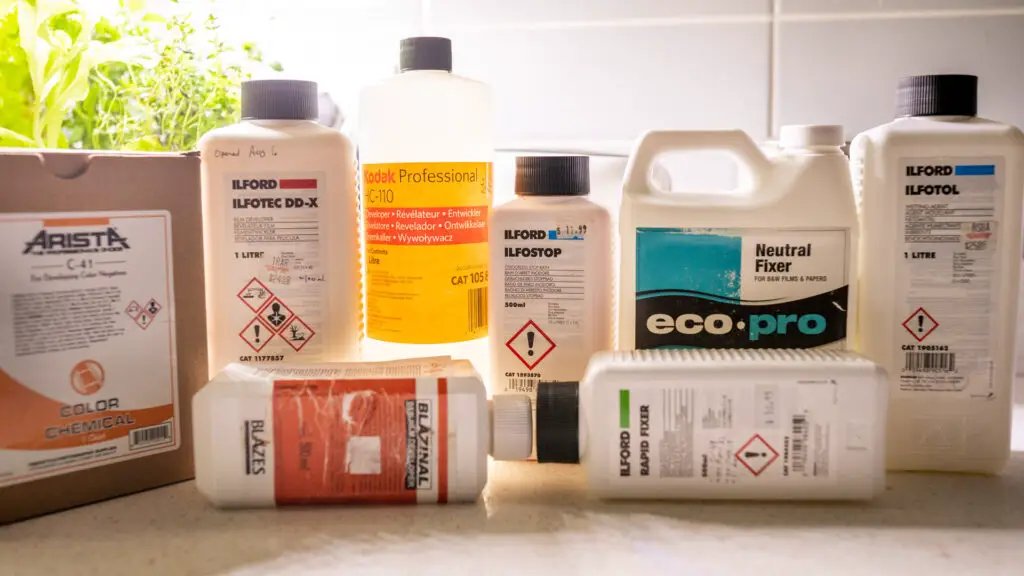
Which film developers cannot go down the drain?
All other film developers should be disposed of at a proper facility, dried in cat litter, or dicalite powder, and disposed of with solid waste. This includes popular film developers like Rodinal, HC-110, D-76, D-96, Microphen, PQ-Universal, DD-X, Ilfosol 3, Dektol, Kodak TMax developer, pyro-type developers, and their clones.
Most developers are made out of environmentally-damaging chemicals like hydroquinone, metol, catchetol, or P-aminophenol. They are derived from the petrochemical industry and are highly toxic to humans and wildlife. When they are bleached in wastewater treatment plants, the phenols become chlorophenols, which are known carcinogens that tend to persist longer in water.
The best solution is always to store and label these products inside a waste container that you can bring to a local facility. Every community will have a different way to dispose of dangerous chemicals, and most will have an option to do this for free. The best way to find the proper information is to search on Google for waste management in your local area, or on your town council website.
If there are no facilities around you, you can dry the solution in dicalite powder, or cat litter and dispose of it with solid waste. This way it will not permeate into groundwater where it can cause environmental damage.

Is stop bath safe to pour down the drain?
Stop bath can be poured down the drain, or it can be stored and reused multiple times.
Stop bath is made of either acetic acid (vinegar), or citric acid, with a little bit of phenolphthalein mixed in. The phenolphthalein is an indicator that becomes a dark blue or purple when the stop bath has been neutralized.
Stop bath can be kept and reused until it changes color, but it can also be used to neutralize the film developer before disposal.
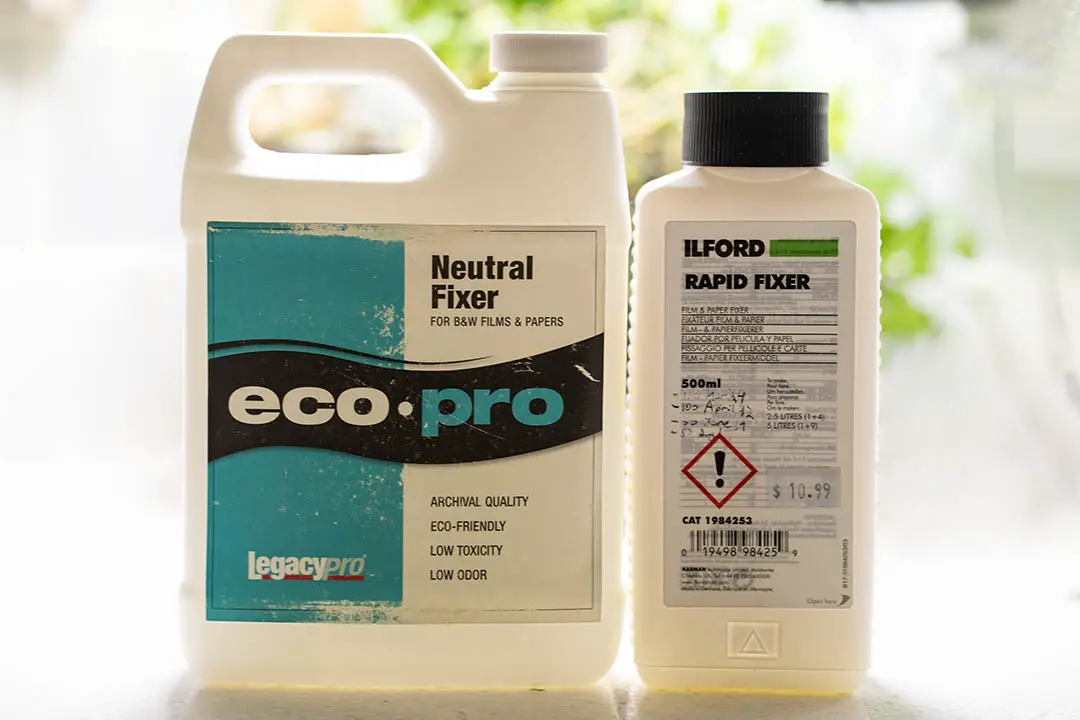
What is the best way to dispose of film fixer?
Photographic fixer (for both black & white and color films) is the main developing chemical that needs to be disposed of properly.
Fixer removes the unexposed silver from the film, which is a toxic heavy metal that can harm aquatic life and is difficult to remove through wastewater treatment plants. Silver also bioaccumulates and is extremely difficult and costly to clean up when it enters an environment.
That’s why it is important to store the fixer solutions and bring them to a waste center that is able to handle the chemicals properly. Most municipalities will have an accessible facility that is able to handle the chemicals. If not, photo labs do often take the used fixer back and remove the silver from the solutions.
If none of these options are available, the next best way to dispose of fixer is to dry the solution in dicalite powder or cat litter. When the solution is dry, it can be disposed of with the regular solid landfill waste.
Dicalite is diatomaceous earth, which is a silica solution used to clean up industrial spills, like oil or other solvents. It’s typically cheaper than cat litter, but may only be available at places like Home Depot, Lowes, or other hardware and farmer’s supply stores.
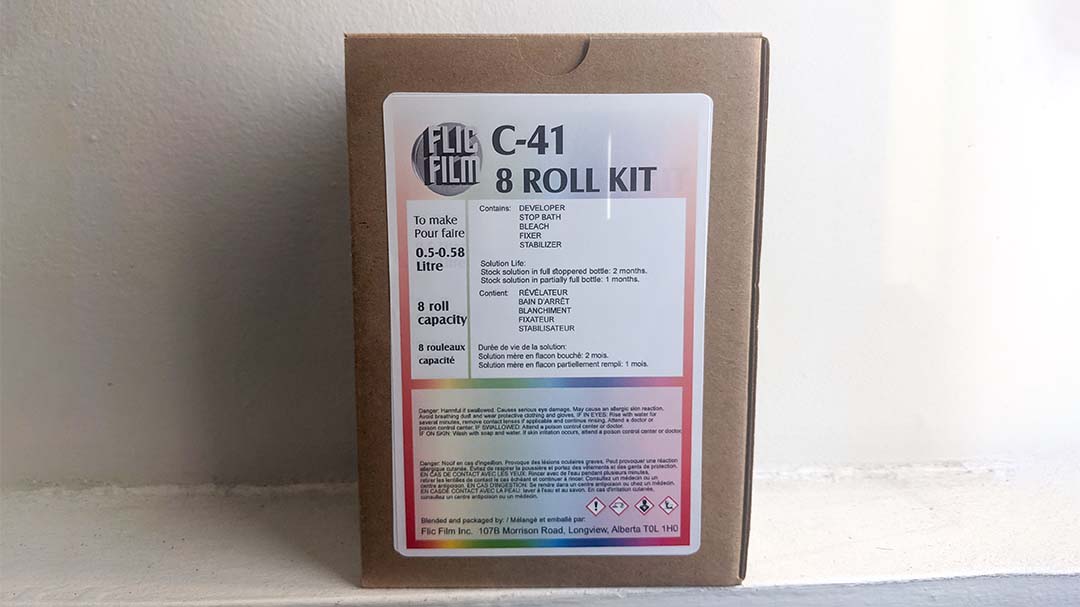
Color film bleach and blix
Bleach and blix are both used to remove silver from color film, meaning they need to be treated the same way as fixer so that silver is not released into aquatic ecosystems.
Bottle and store bleach and blix (they can be in the same bottle), and take the solutions to a waste facility that deals with silver. In many cases, your local lab will also be able to take these chemicals for you.
If you cannot take your chemicals to a facility that can remove the silver and properly dispose of it, then the next best solution is to dry the blix or photographic bleach in cat litter or dicalite powder and dispose of it at the landfill with regular solid waste.
Why is it safer to dry chemicals and dispose of them with the solid waste?
Drying and disposing of chemicals with solid waste should always be the last solution when there aren’t any other options available. Cat litter and dicalite powder are both common, everyday powders that will contain water or other liquids like oil.
The reason it is safe to dispose of dried film developing chemicals like film developers and even used film fixer, is because the landfills are well sealed from the rest of the environment. They are designed to contain waste and not allow anything to leach back into the surrounding environment.
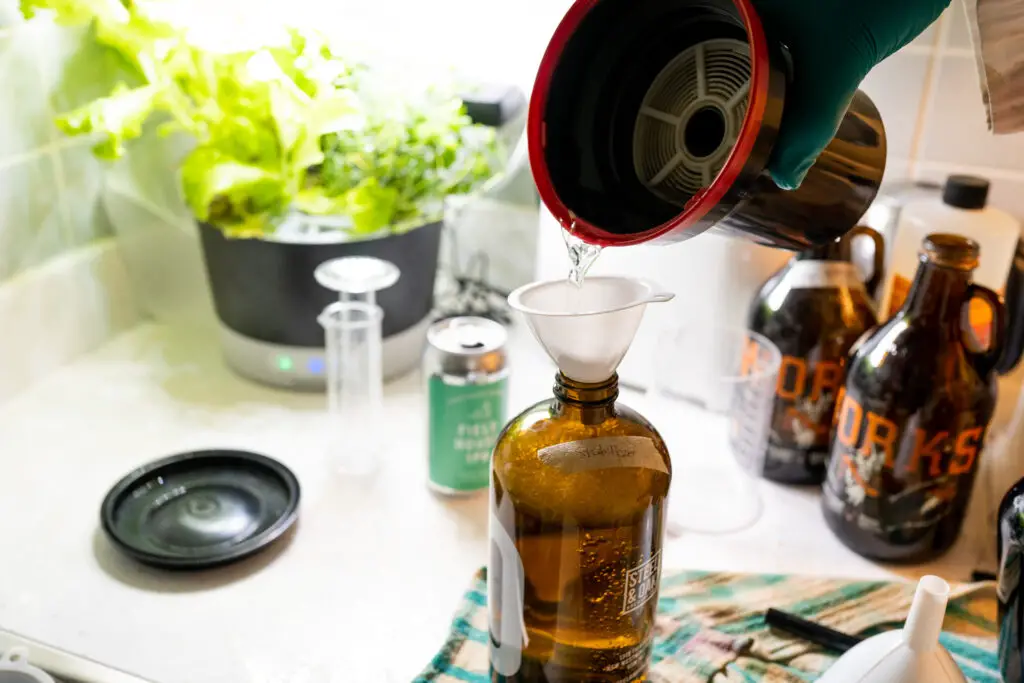
Final thoughts
It’s easy to sit here and say that everything needs to be disposed of perfectly, and that you 100% have to dispose of these chemicals properly or you’re a bad person.
But there is a different reality on the ground. Disposing of these chemicals the right way isn’t always easy — or even feasible. I personally have 4x 4L jugs of fixer and blix sitting under my kitchen sink because I haven’t been able to get it to a proper facility. And I know I’m not the only one.
Many of those ‘proper’ facilities are only open 9-5 Monday to Friday, meaning I have to take time off work, and sometimes spend money to dispose of these chemicals. Now, this is our responsibility as good citizens, however, it’s not feasible for everyone to accomplish.
That’s why I also dive in and give the imperfect solutions, like using cat litter as well. Because there are thousands of other people just like me, who are unable to get to the right place at the right time to dispose of my chems.
How do you dispose of your film developing chemicals? Let me know down in the comments below!

By Daren
Daren is a journalist and wedding photographer based in Vancouver, B.C. He’s been taking personal and professional photos on film since 2017 and began developing and printing his own photos after wanting more control than what local labs could offer. Discover his newest publications at Soft Grain Books, or check out the print shop.

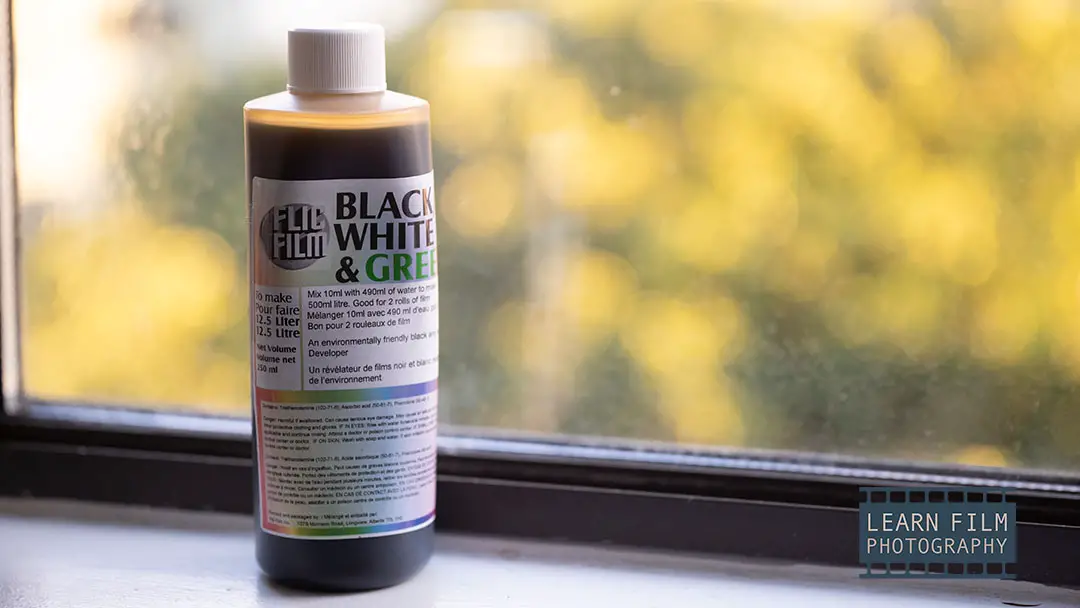
Can it be let to vaporize?
Hello Mihai,
Yes, it can be left to vaporize, and then you can dispose of the dried powder in the regular garbage. But that can take a while, unless it’s left in your backyard in the direct sunlight.
Regards,
Daren
Any recommendations for facilities that take photographic chemicals in Vancouver?
Hi Ryan,
I personally take my chemicals to The Lab downtown. They charge $5 per bottle, and don’t return the bottle. So I just fill up old distilled water bottles and bring it there when I have enough.
Hope that helps!
Daren